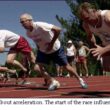Help With Obtaining and Maintaining Erections
The fear of impotence is almost always present in a discussion about the treatment for prostate cancer.
If prostate cancer is detected early and patients are treated by an experienced surgeon using nerve sparing techniques, then in the vast majority of men their sex lives will return after surgery.
Other treatments such as radiation therapy and hormonal therapy can have a negative impact on the ability to have erections, but they do not uniformly destroy a sex life.
Help with obtaining and maintaining erections is available now in a lot of different ways including pills, a vacuum pump, suppositories, injections and a prosthesis.
Viagra
Viagra (sildenifil) comes in three pill strengths: 25, 50, and 100 mg.
It should be taken 1-2 hours before intercourse and is best taken on a fairly empty stomach and especially not after a high-fat meal.
Sexual stimulation is necessary to produce an erection.
Side effects do not occur in all patients, but some patients have flushing, headaches, visual changes of a “blue haze,” pounding of the heart, or a feeling of “hangover” the next morning.
Viagra should not be taken by patients who take nitroglycerin or any other “nitrates” for angina, as it could be fatal. Otherwise, buy Viagra is safe.
If a man has any questions about taking Viagra, he should check with his internist or cardiologist beforehand.
Vacuum Pump
The vacuum pump is a plastic tube that is placed over the penis and sealed to the surrounding skin with Vaseline petroleum jelly.
A hand or battery-operated pump is used to create a vacuum in the tube which draws blood into the penis, producing an erection.
A rubber ring that was placed on the base of the tube is then released from the base of the tube and transferred to the base of the penis to trap the blood in the penis.
Many patients find this device effective, but others do not like it because it is not natural or spontaneous. Some find the rubber ring uncomfortable.
Suppositories
Intraurethral suppositories are small pellets, MUSE, which come in doses of 250, 500, and 1000 micrograms.
A pellet is inserted into the tip of the penis through a small plastic introducer that is similar to an eye dropper.
The penis is then rolled back-and-forth between the palms of the hands until the pellet dissolves.
The medicine in the pellet, prostaglandin, is absorbed through the urethra. This medicine causes the blood vessels in the penis to dilate and blood flows into the penis, producing an erection in many patients.
Often a small rubber tourniquet is also placed around the base of the penis before inserting the MUSE suppository to hold the medicine in the penis.
This tourniquet called an Actus Venous Flow Regulator is also useful for men who are able to get erections, but are not able to hold them. This condition, called venous leak, is common in older men and men who have undergone radical prostatectomies.
Some men find MUSE very effective, but others do not like the idea of inserting anything into the tip of their penis. In some men, the medicine causes burning in the urethra.
Injections
Injections into the side of the penis with an insulin syringe can be used to put a small amount of medicine, prostaglandin or Tri-Mix, directly into the side of the penis.
This injection usually produces a lasting erection in about five minutes.
This method is one of the most popular and effective for producing erections; however, some men do not like the idea of injecting their penis with a needle.
If too much medicine is injected, the erection may persist for longer than two hours and sometimes, injection of another medicine is required to make the erection subside.
Also, injections have the possibility of causing small areas of bleeding in the tissues of the penis that may lead to scarring and curvature of the penis, called Peyronie’s disease.
Anything that can injure blood vessels in the penis, including kinking of the penis during vigorous intercourse or trauma from the constricting rings of a vacuum device, can lead to curvature of the penis. This condition often gradually gets better as the tissues heal and the scar tissue stretches, but it can take years and it may never completely get back to normal. Occasionally surgery is required to correct it.
Prostheses
Penile prostheses are devices that are surgically implanted inside the penis and scrotum.
They come in two varieties: inflatable and malleable.
Most patients prefer the inflatable ones because they are natural in appearance and function.
Although penile prostheses require an operation, most patients are delighted with them once they are in place because they do not involve the possible side effects of the other medications.







